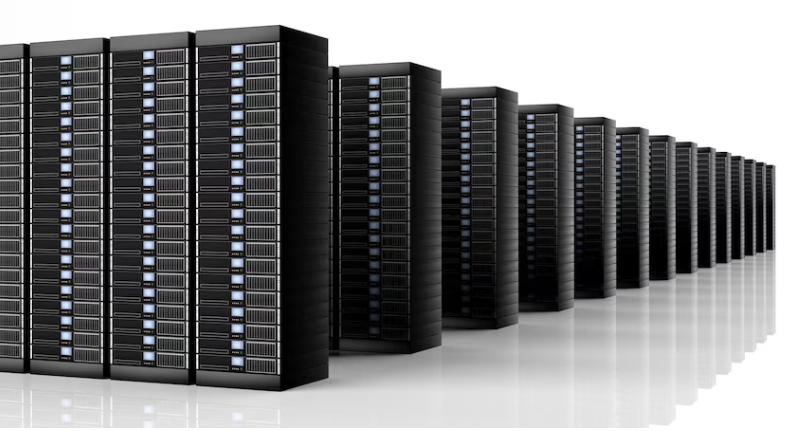Network Attached Storage (NAS) systems have transformed how businesses and individuals store, access, and manage their digital data. These versatile devices offer centralized storage solutions that can dramatically improve data accessibility, security, and collaboration across networks of all sizes.
Whether you're a small business owner looking to streamline file sharing or an enterprise seeking robust data management, understanding NAS technology can help you make informed decisions about your storage infrastructure. This comprehensive guide explores how NAS systems function, their core benefits, and practical applications that could revolutionize your data storage approach.
Understanding NAS System Architecture
A NAS system operates as a dedicated file storage device connected directly to your network. Unlike traditional external drives that connect to individual computers, NAS devices function as independent servers accessible to any authorized device on the network.
The core architecture consists of specialized hardware running embedded operating systems optimized for file serving. These systems typically include multiple hard drive bays, network interfaces, and processing units designed specifically for data storage and retrieval operations.
When you request a file from a NAS system, the device processes your request independently of any host computer. This autonomous operation ensures consistent performance and availability, even when individual computers on the network are powered down or experiencing issues.
Key Components That Power NAS Performance
Storage Configuration Options
Most NAS systems support various RAID configurations to balance performance, capacity, and data protection. RAID 1 mirrors data across drives for redundancy, while RAID 5 distributes data and parity information across multiple drives for both performance and protection.
Higher-end units offer hot-swappable drive bays, allowing you to replace failed drives without powering down the system. This feature proves particularly valuable for enterprise NAS deployments where downtime directly impacts productivity.
Network Connectivity Features
Modern NAS systems include gigabit Ethernet ports as standard, with many enterprise models offering 10-gigabit connections for high-bandwidth applications. Advanced units may include multiple network ports for link aggregation, effectively multiplying network throughput for demanding workloads.
Wireless connectivity options have also expanded, with some consumer NAS devices incorporating Wi-Fi capabilities for simplified setup and mobile device integration.
Practical Applications for Business and Personal Use
Centralized File Storage and Sharing
NAS systems excel at creating centralized repositories accessible from multiple devices simultaneously. Teams can collaborate on documents, share large media files, and maintain synchronized project folders without relying on cloud services or complex server setups.
For businesses handling sensitive data, NAS systems offer local control over file access permissions, user authentication, and data encryption. This control becomes especially important for industries with strict compliance requirements.
Automated Backup Solutions
Many NAS systems include comprehensive backup software capable of protecting data from computers, mobile devices, and even cloud services. Scheduled backups run automatically, ensuring critical data remains protected without manual intervention.
Version control features allow users to restore previous versions of files, providing protection against accidental changes or corruption. Some systems maintain multiple backup versions, creating detailed recovery options for various scenarios.
Media Streaming and Entertainment
Consumer NAS devices often include media server capabilities, transforming them into personal Netflix-style streaming platforms. Users can store movies, music, and photos on the NAS and stream content to smart TVs, tablets, and mobile devices throughout their homes.
Transcoding features automatically convert media files to formats compatible with different devices, ensuring smooth playback regardless of the original file format.
Enterprise NAS: Scaling for Business Demands
Enterprise NAS solutions address the complex storage needs of larger organizations with advanced features and greater capacity options. These systems often support hundreds of concurrent users while maintaining consistent performance levels.
Advanced Management and Monitoring
Enterprise NAS platforms include sophisticated management interfaces that allow IT administrators to monitor system health, track usage patterns, and configure detailed access controls. SNMP support enables integration with existing network monitoring systems.
Automated alerts notify administrators of potential issues before they impact operations, while detailed logging provides audit trails for security and compliance purposes.
Integration Capabilities
Modern enterprise NAS systems integrate seamlessly with existing IT infrastructure, supporting protocols like Active Directory, LDAP, and various virtualization platforms. This compatibility ensures smooth deployment without disrupting established workflows.
Many enterprise units also offer API access, enabling custom integrations and automated management through existing IT management tools.
Choosing the Right NAS System for Your Needs
Selecting an appropriate NAS system requires careful consideration of current needs and future growth plans. Start by evaluating your storage capacity requirements, considering both immediate needs and projected growth over the next few years.
Network performance requirements also influence NAS selection. Organizations frequently transferring large files benefit from systems with faster processors and multiple gigabit network connections.
Consider the number of concurrent users who will access the system regularly. Consumer NAS devices typically handle 10-20 simultaneous connections effectively, while enterprise systems can support hundreds of users without performance degradation.
Maximizing Your NAS Investment
Regular maintenance ensures optimal NAS performance and longevity. This includes monitoring drive health, updating firmware, and periodically reviewing access logs for security purposes.
Implementing proper backup strategies remains crucial even with RAID protection. While RAID protects against individual drive failures, it doesn't safeguard against fire, theft, or multiple simultaneous failures.
Consider integrating cloud backup services as an additional protection layer, using the NAS system to automate offsite backups of critical data.
Transform Your Data Management Strategy
NAS systems represent powerful tools for modernizing data storage and access across organizations of all sizes. From simple file sharing to comprehensive enterprise storage solutions, these devices offer scalable options that grow with your needs.
The combination of centralized storage, automated backup capabilities, and flexible access options makes NAS technology an attractive alternative to traditional storage methods. By understanding how these systems work and their potential applications, you can make informed decisions that improve data management efficiency while reducing long-term storage costs.
